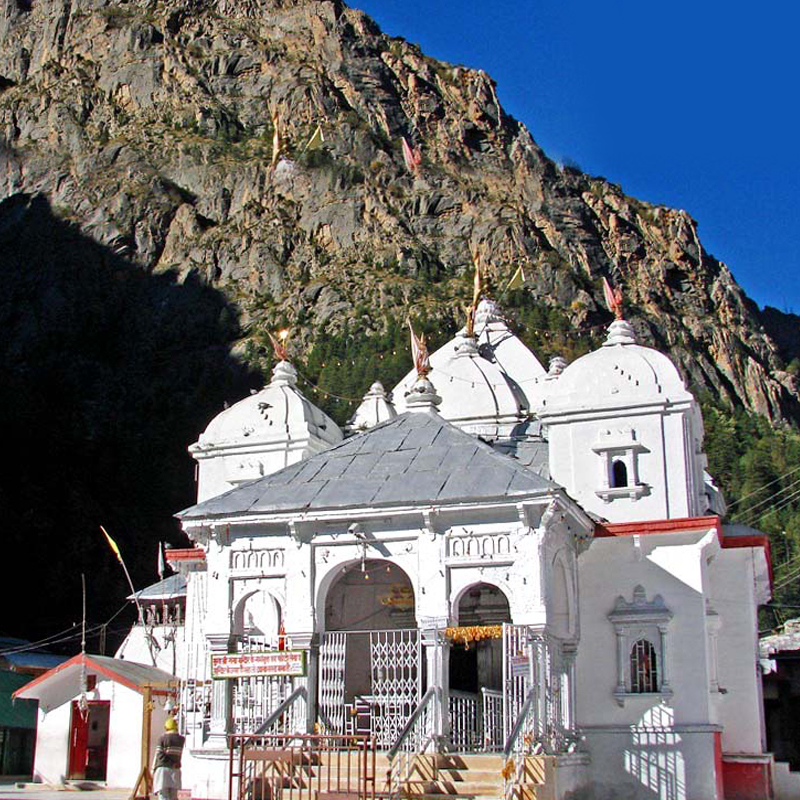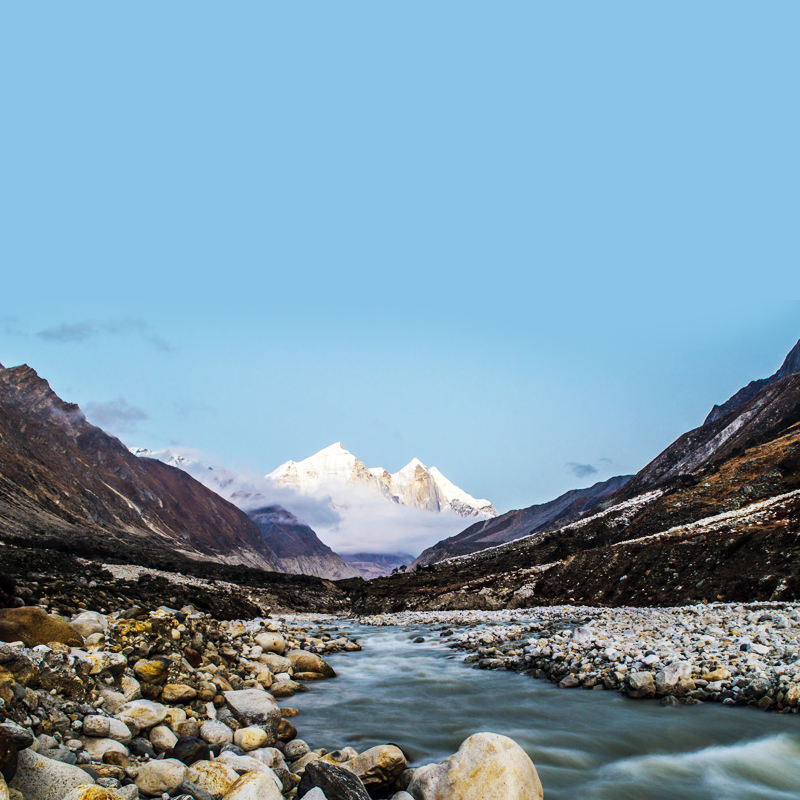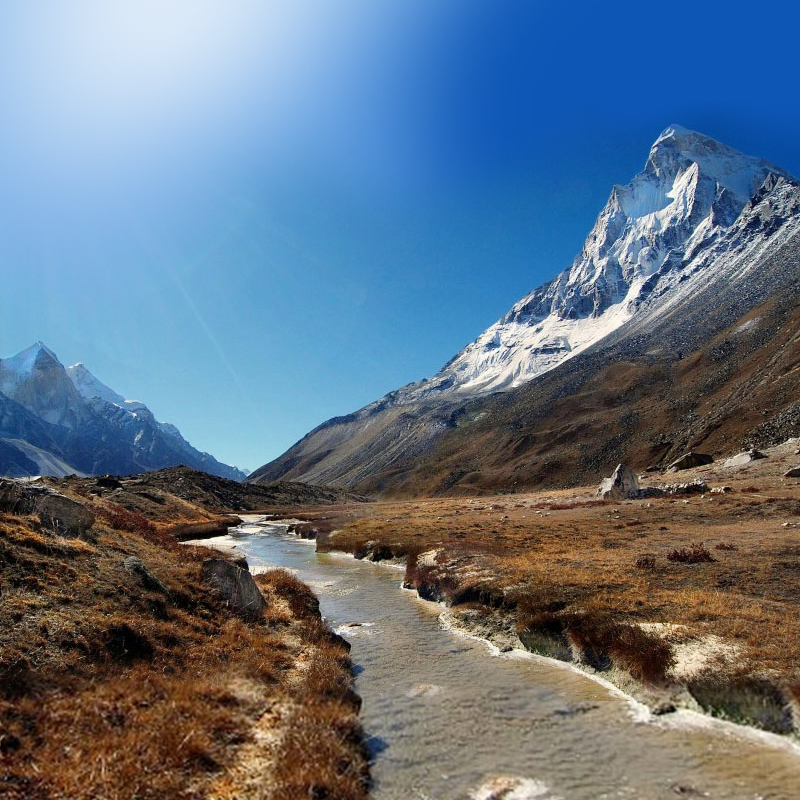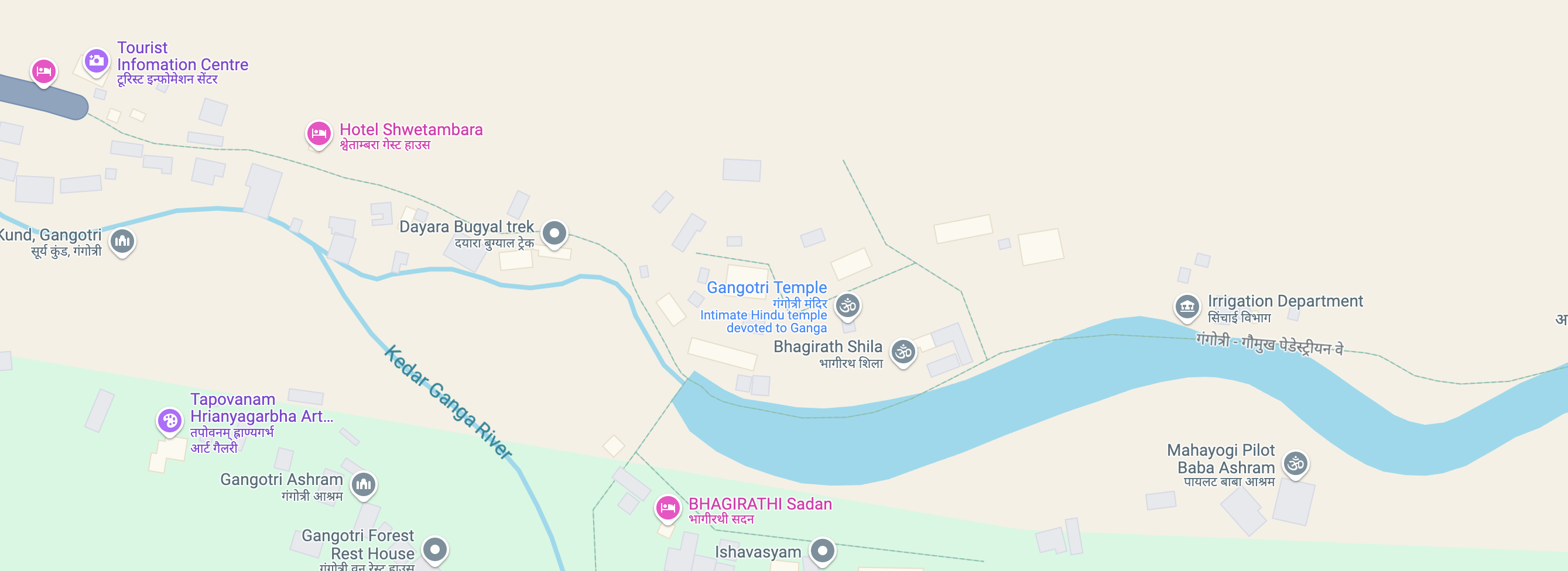Gangotri Temple, located in the Uttarkashi district of Uttarakhand, stands at an impressive altitude of 3,100 meters. Dedicated to Goddess Ganga, this temple marks the place where the sacred river is believed to have descended from heaven. Surrounded by majestic mountains and dense forests, Gangotri is not only a symbol of purity but also a testament to the enduring devotion of Hindu pilgrims.
Noteworthy Attractions
Architecture
The Gangotri Temple features a distinct 18th-century North Indian architecture style, predominantly constructed from white granite. The structure of the temple is simple yet striking, with a tall shikhara (spire) that is typical of Hindu temple architecture.
Sacred Dip
Bhagīratha Śilā
Bhagirath Shila (Bhagīratha Śilā) marks the spot where King Bhagirath meditated to bring the Ganges to Earth. Revered by pilgrims, this rock symbolizes dedication and spiritual resolve, making it a significant and inspirational site in the sacred landscape of Gangotri.
History & Culture

Origins & Legacy
Gangotri, revered as one of the holiest sites in Hinduism, is intrinsically linked to the legend of King Bhagīratha, whose penance led to the descent of the river Ganges from the locks of Lord Śiva to purify the souls of his ancestors. The temple itself, nestled in the Garhwal Himalayas, was built in the early 18th century by the Gorkha General Amar Singh Thapa. It has since been a testament to the unyielding devotion of countless pilgrims who journey here to honor the source of the sacred river Ganga.

Sacred Importance

Rituals & Traditions
-
Gaumukh Trek: The trek to Gaumukh, the source of the River Ganges, is not only a journey through stunning Himalayan landscapes but also a significant spiritual expedition. This 18-kilometer trek from Gangotri is often undertaken by devout pilgrims as part of their spiritual practice.
-
Ganga Aarti: The daily Ganga Aarti at Gangotri is a visually stunning and spiritually uplifting ceremony. Conducted at sunrise and sunset, this ritual involves singing hymns, ringing bells, and performing pujas by the riverbank.
-
Akshaya Tritiya Opening: The temple doors officially open on the auspicious day of Akshaya Tritiya, marking the beginning of the pilgrimage season.
Practical Guidance
When to Go
The temple is open from April to November, avoiding the harsh winter. The best time to visit is May-June and September-October, avoiding the monsoon season for safety reasons.
Respect & Reverence
Guidelines
- Dress modestly, maintain the sanctity of the site by not polluting the river.
Restrictions
-
Alcohol and non-vegetarian food are prohibited in the vicinity of the temple.
Immersive Experiences
Spiritual Practices
Immerse yourself in the divine energy of Gangotri Temple, nestled in the purity and tranquility of the Himalayas. Experience the spiritually uplifting morning and evening Ārti by the riverbank—watch as the temple and surrounding landscape come alive with the glow of oil lamps and the rhythmic chants of mantras, creating an atmosphere of divine magic.
Local Rituals
Participate in the Ganga Aarti, a daily ritual that venerates Goddess Ganga. This ceremony, performed at dusk, features the ceremonial waving of lamps accompanied by the sacred chanting of hymns and mantras. It’s a spiritually enriching practice that draws pilgrims closer to the celestial and purifying energies of the Ganges, reinforcing the sanctity of the water that is believed to wash away sins.
Char Dham Yatra
Closing Reflection
Gangotri Temple stands as a testament to the sacredness of nature and the power of devotion, offering a path to spiritual purification and enlightenment.


